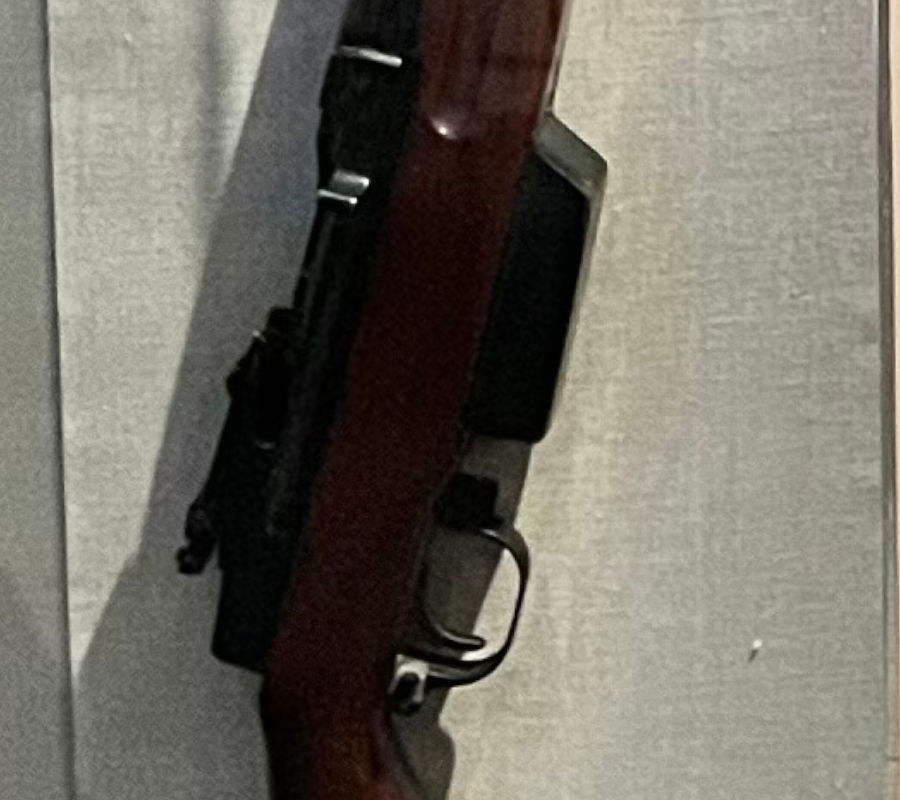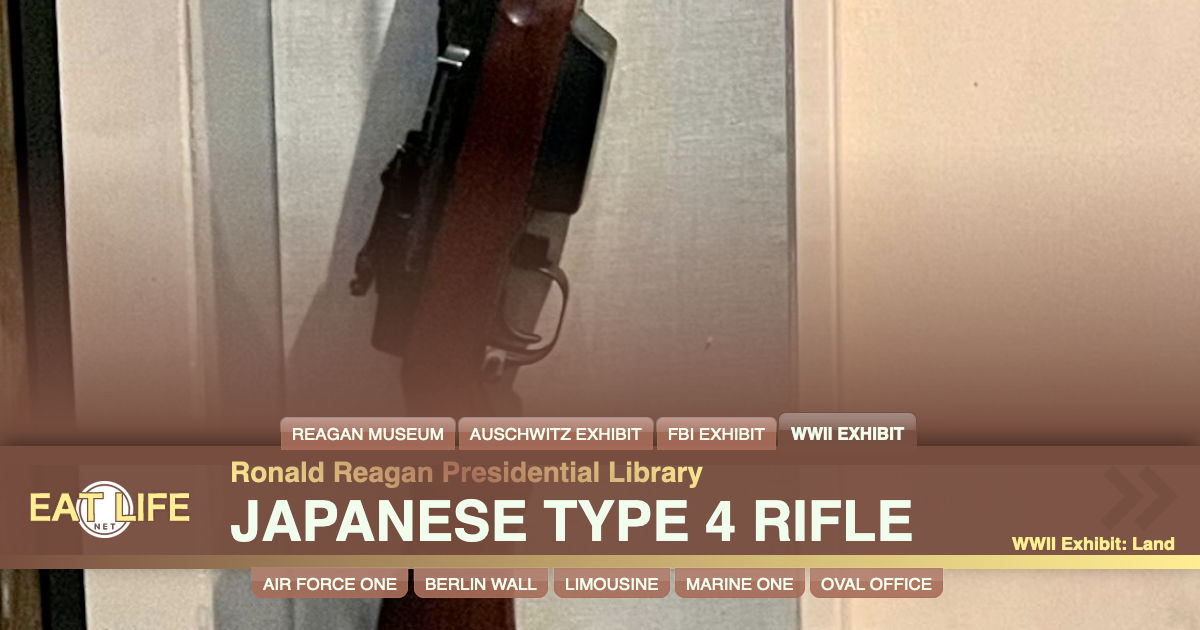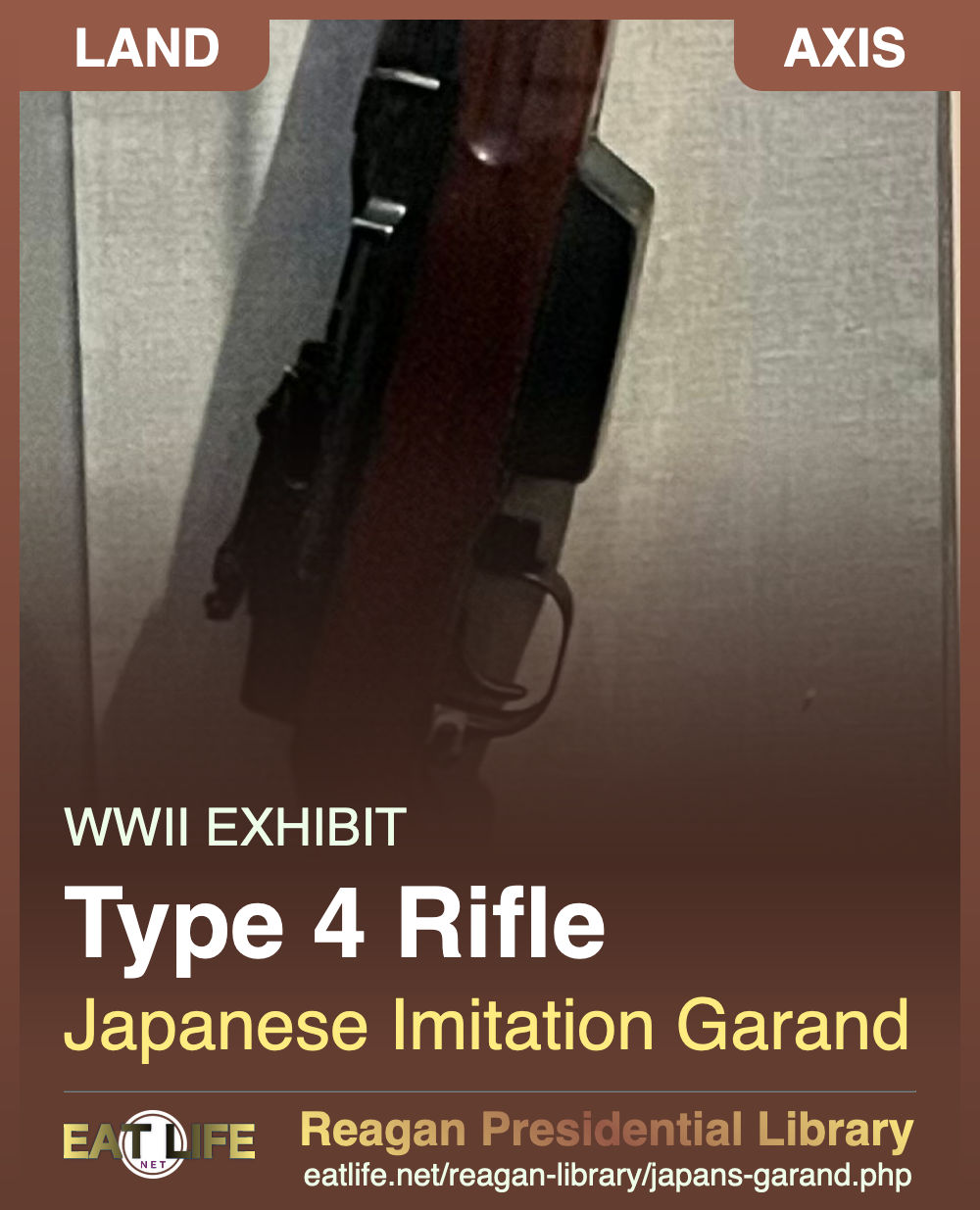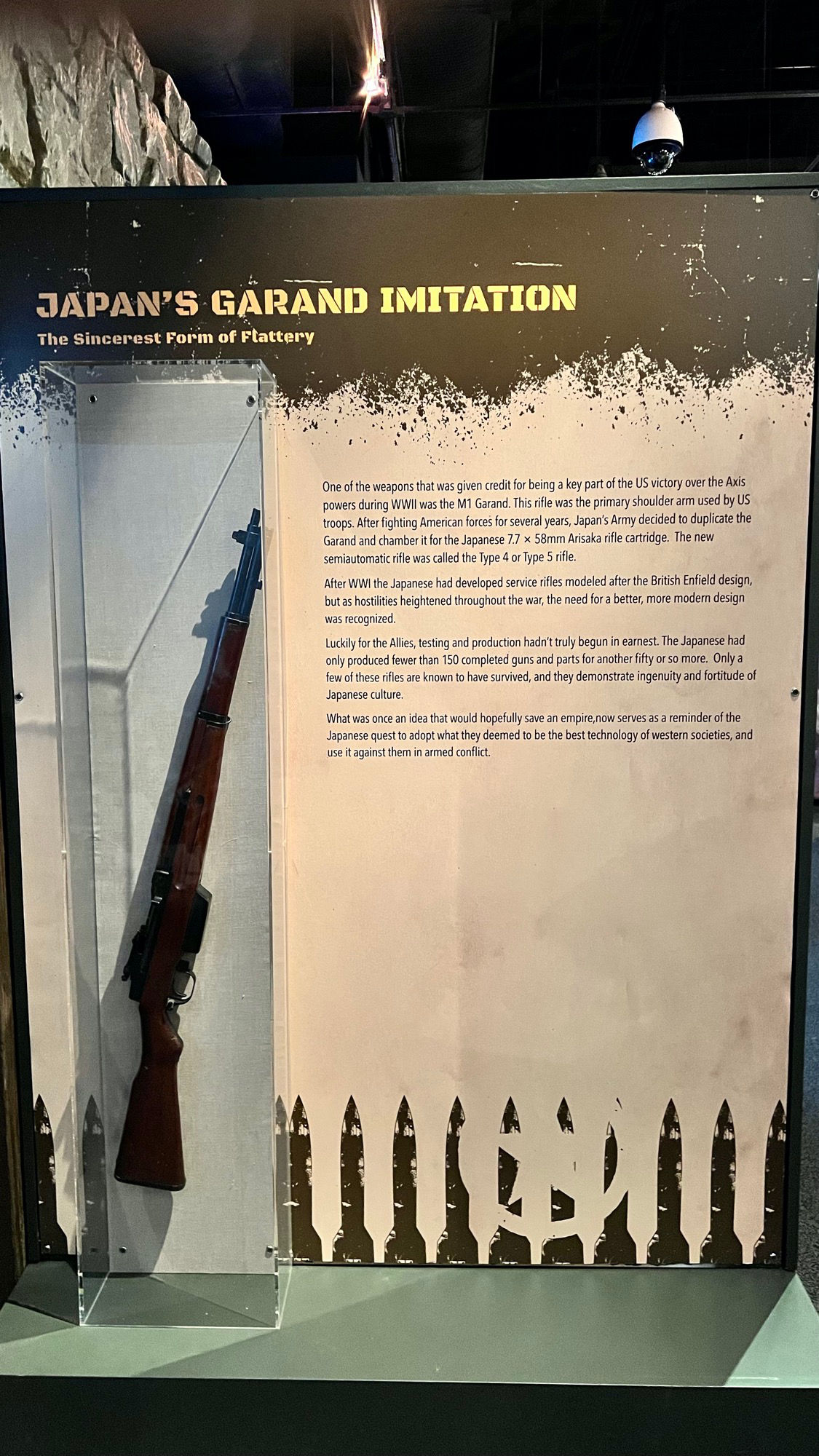
The Sincerest Form of Flattery
One of the weapons that was given credit for being a key part of the US victory over the Axis powers during WWII was the M1 Garand. This rifle was the primary shoulder arm used by US troops. After fighting American forces for several years, Japan's Army decided to duplicate the Garand and chamber it for the Japanese 7.7 x 58mm Arisaka rifle cartridge. The new semiautomatic rifle was called the Type 4 or Type 5 rifle.
After WWI the Japanese had developed service rifles modeled after the British Enfield design, but as hostilities heightened throughout the war, the need for a better, more modern design was recognized.
Luckily for the Allies, testing and production hadn't truly begun in earnest. The Japanese had only produced fewer than 150 completed guns and parts for another fifty or so more. Only a few of these rifles are known to have survived, and they demonstrate ingenuity and fortitude of Japanese culture.
What was once an idea that would hopefully save an empire, now serves as a reminder of the Japanese quest to adopt what they deemed to be the best technology of western societies, and use it against them in armed conflict.
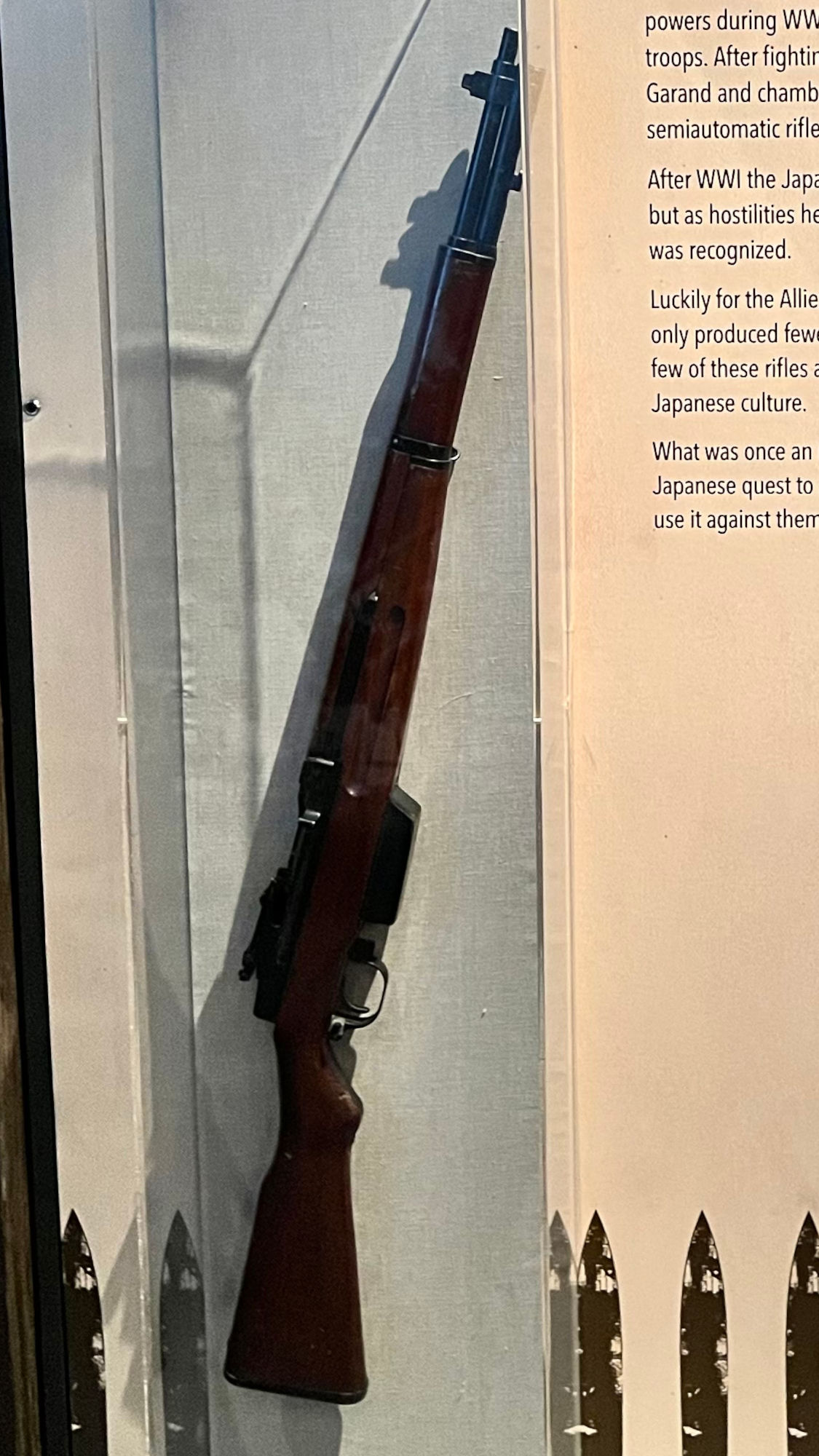
WIKIPEDIAThe Type 4 rifle (often referred to as the Type 5 rifle)
Japanese experimental semi-automatic rifle. It was based on the American M1 Garand with an integral 10-round magazine and chambered for the Japanese 7.7×58mm Arisaka cartridge. Where the Garand used an 8-round en-bloc clip, the Type 4's integral magazine was charged with two 5-round stripper clips and the rifle also used Japanese-style tangent sights.The Type 4 rifle had been developed alongside several other experimental semi-automatic rifles. However, none of the rifles entered into service before the end of World War II, with only 250 being made, and many others were never assembled. There were several problems with jamming and feed systems, which also delayed its testing.
World War II
During the Second World War, Japanese soldiers relied on bolt-action type rifles. However, guns were getting scarce and their main military opponent, the United States, had replaced their bolt weapons with modern semi-automatic rifles.At the same time, Nazi Germany and the Soviet Union were also developing their own semi-automatic weapons, such as the Russian SVT-40 and German Gewehr 43, which would give them a great advantage on the battlefield. This pressured Japan to find a quick way to cope with their military disadvantage. Instead of designing and investing in a new weapon from scratch, they opted to copy the American M1 Garand.
Initially, the Japanese experimented with re-chambering captured American M1 rifles, since the 7.7×58mm Arisaka Japanese cartridge has similar dimensions to the .30-06 Springfield cartridge. They found that while the Garand could chamber, fire, and cycle with the 7.7×58mm Arisaka ammunition, the 8-round en-bloc clip system was incompatible with the new rifle cartridge and would not feed reliably. Instead the Japanese designers reverse engineered the M1 Garand and discarded the 8-round en-bloc clip, replacing it with a fixed internal 10-round magazine charged by two 5-round Arisaka Type 99 stripper clips.
Japan had previously developed semi-automatic service rifles, but none of them had been viewed as successful or of trustworthy quality. The design work for the Type 4 rifle began in 1944.
The Type 4 rifle was meant to be mass-produced in 1945. However, the Japanese were defeated in August of the same year, therefore the manufacturing process was indefinitely halted.
At the time, an estimate of 125 Type 4 rifle's were completed out of the 250 in the workshop. Twenty of them were taken by the Allies at the Yokosuka Naval Arsenal on Honshu after the end of the war.
